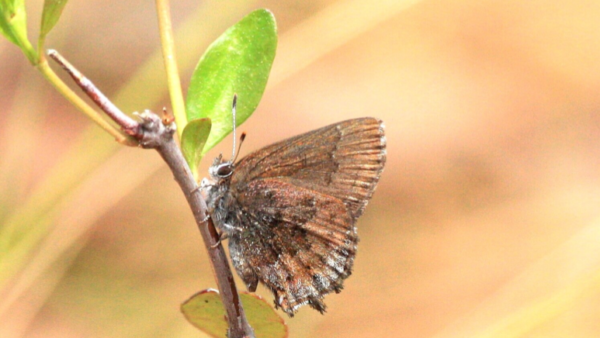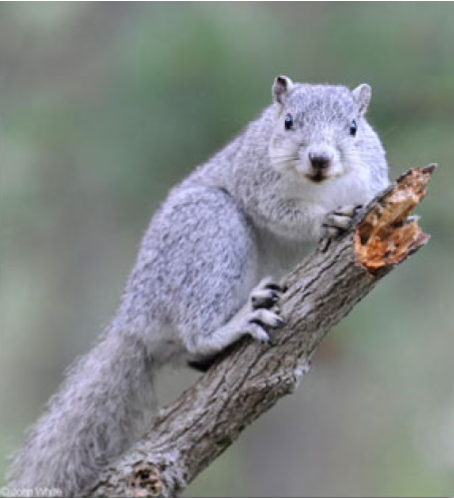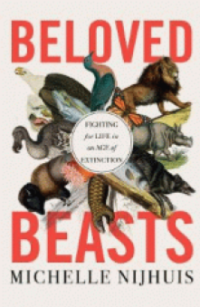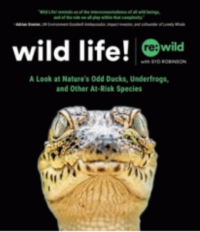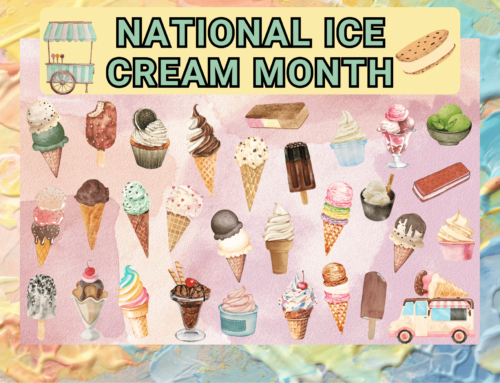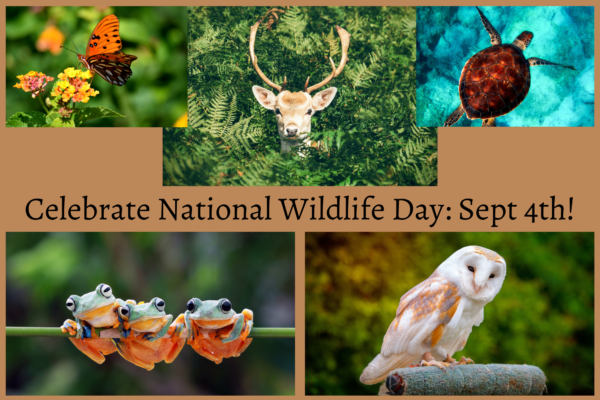
September 4th is National Wildlife Day!
From the enormous blue whales gliding through the depths of the ocean to the tiniest insects buzzing lazily around your house, wildlife enriches our lives and helps preserve the world we live in. This September, take a moment to consider how you can help local wildlife fighting for survival . Here in Maryland, there are currently 519 species classified as Critically Imperiled by the Maryland Department of Natural Resources .
Some of these wonderful creatures include:
Frosted Elfin Butterfly:
According to the U.S. Fish and Wildlife Service, the frosted elfin butterfly is a small butterfly that does not migrate. This means the breed is particularly susceptible to habitat loss. It specifically needs wild lupine and wild blue indigo plants to reproduce so if you have some space for a few plants in your yard, help this little guy out! Also, insects, in general, suffer from the excessive use of pesticides. Consider carefully before you spray.
Eastern Narrow-mouthed Rainbow Snake:
The Maryland Department of Natural Resources describes this water-loving reptile as typically ranging from 3 to 4 feet long when fully grown with 3 red stripes running down its body. A red belly with black spots also ensures it easily stands out from other local snake species. They are considered highly endangered, so if you spot one, please contact the Maryland Wildlife and Heritage Service to let them know where and when you had your sighting!
Short Eared Owl:
The Maryland Bird Conservation Partnership notes this as another species suffering largely from habitat loss. Keep an eye out for these medium-sized owls in open grassy areas, low to the ground. A white face with dark-ringed eyes and a brown, slender body distinguish the short-eared owl from the 8 owl varieties flying around Maryland. Historically, they bred and lived in the state but recently have only been recorded migrating through. If you spot a smooth, worn-out area in a field of grass, steer clear. It may be a Short-Eared Owl nest!
Delmarva Fox Squirrel:
Though easily confused with gray squirrels, these fox squirrels are double the size. The Maryland Department of Natural Resources records their population living almost exclusively on the Eastern Shore, but that will hopefully change. They are an excellent example of the positive impacts of conservation. After facing extinction in the early 1900s, efforts were made to preserve their remaining forest habitats, and populations have risen. If you live in an area with many trees and ready access to fresh water, the Delmarva Fox Squirrel may consider being your neighbor!
For more information about animal conservation and endangered species, check out these great resources from CCPL:
Beloved Beasts: Fighting for Life in an Age of Extinction by Michelle Nijhuis
A vibrant history of the modern conservation movement–told through the lives and ideas of the people who built it. In the late nineteenth century, as humans came to realize that our rapidly industrializing and globalizing societies were driving other animal species to extinction, a movement to protect and conserve them was born. In Beloved Beasts, acclaimed science journalist Michelle Nijhuis traces the movement’s history: from early battles to save charismatic species such as the American bison and bald eagle to today’s global effort to defend life on a larger scale. She describes the vital role of scientists and activists such as Aldo Leopold and Rachel Carson as well as lesser-known figures in conservation history; she reveals the origins of vital organizations like the Audubon Society and the World Wildlife Fund; she explores current efforts to protect species such as the whooping crane and the black rhinoceros; and she confronts the darker side of conservation, long shadowed by racism and colonialism. As the destruction of other species continues and the effects of climate change escalate, Beloved Beasts charts the ways conservation is becoming a movement for the protection of all species.
A Wingandaprayer: The Race to Save Our Vanishing Birds by Anders and Beverly Gyllenhaal
Three years ago, headlines delivered shocking news: nearly three billion birds in North America have vanished over the past fifty years. No species has been spared, from the most delicate jeweled hummingbirds to scrappy black crows, from a rainbow of warblers to common birds such as owls and sparrows. For the past year, veteran journalists Anders and Beverly Gyllenhaal traveled more than 25,000 miles across the Americas, chronicling costly experiments, contentious politics, and new technologies to save our beloved birds from the brink of extinction. Through this compelling drama, A Wing and a Prayer offers hope and an urgent call to action: Birds are dying at an unprecedented pace. But there are encouraging breakthroughs across the hemisphere and still time to change course, if we act quickly.
Hope for Animals and Their World: How Endangered Species are Being Rescued from the Brink by Jane Goodall, with Thane Maynard and Gail Hudson
Three years ago, headlines delivered shocking news: nearly three billion birds in North America have vanished over the past fifty years. No species has been spared, from the most delicate jeweled hummingbirds to scrappy black crows, from a rainbow of warblers to common birds such as owls and sparrows. For the past year, veteran journalists Anders and Beverly Gyllenhaal traveled more than 25,000 miles across the Americas, chronicling costly experiments, contentious politics, and new technologies to save our beloved birds from the brink of extinction. Through this compelling drama, A Wing and a Prayer offers hope and an urgent call to action: Birds are dying at an unprecedented pace. But there are encouraging breakthroughs across the hemisphere and still time to change course, if we act quickly.
Wild life!: A Look at Nature’s Odd Ducks, Underfrogs, and Other at-Risk Species by Re:wild with Syd Robinson.
Ever hear of the Pink-headed Duck? What about Romeo the Frog, a type of rare water frog who found his mate with the help of an online dating photo? Our world is full of quirky, interesting wild animals that roam the treetops and plains and who make our planet a vibrant, diverse place to live. Wild Life! celebrates them by providing you with inspiring facts, conservation success stories, and profiles of people working hard to find and protect the rarest of these species. Along with remarkable, full-color photos, this book will both entertain and inform you about the rare and endangered animals that may soon disappear if we don’t make the necessary steps towards conserving our environment.

